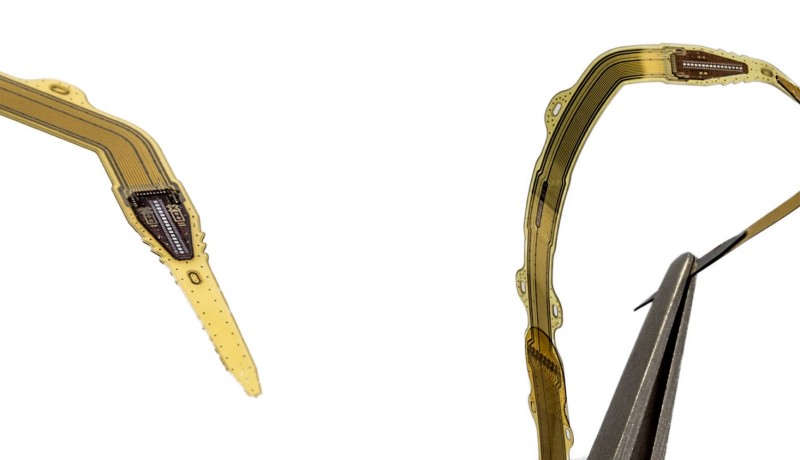Implantable micro chip enables feeling in prostheses
May 31, 2017
on
on

IMEC has unveiled the world’s first prototype of an implantable microchip for prostheses with touch feedback, also called “haptic prostheses”. The chip can very precisely send signals from nerve cells to motorized components in an artificial arm, giving the user more intuitive control over the artificial arm. Feedback can also be sent from sensors in the prosthesis to the brain, creating a sense of touch in the prosthesis.
Current arm prosthesis technology already allows users to move their artificial arms and to grasp and manipulate objects. This is done through an interface which reads nerve signals and sends them to electric motors in the prosthesis. However, current prostheses do not allow fine motor control, and they do not give users any haptic feedback (touch feedback). The Implantable Multimodal Peripheral Recording and Stimulation System (IMPRESS) project at the University of Florida is part of DARPA’s HAPTIX program, which aims to create a closed-loop system for the next generation of haptic prostheses. An objective of IMPRESS is to develop peripheral nerve interfaces with many more communication channels, higher electrode density and higher stability of the detected and conveyed information, so that fine motor control and haptic feedback are possible in prostheses.
As part of the IMPRESS project, IMEC has developed a prototype of an ultra-thin microchip in a biocompatible, hermetic and flexible package. There are 64 electrodes on the tiny surface of the implantable chip. This remarkably large number of electrodes enables very high-resolution readout of nerve signals and precise stimulation of nerve cells. Using a needle attached to the chip, it can be implanted in the arm and attached to a nerve bundle, further improving the precision.
Current arm prosthesis technology already allows users to move their artificial arms and to grasp and manipulate objects. This is done through an interface which reads nerve signals and sends them to electric motors in the prosthesis. However, current prostheses do not allow fine motor control, and they do not give users any haptic feedback (touch feedback). The Implantable Multimodal Peripheral Recording and Stimulation System (IMPRESS) project at the University of Florida is part of DARPA’s HAPTIX program, which aims to create a closed-loop system for the next generation of haptic prostheses. An objective of IMPRESS is to develop peripheral nerve interfaces with many more communication channels, higher electrode density and higher stability of the detected and conveyed information, so that fine motor control and haptic feedback are possible in prostheses.
As part of the IMPRESS project, IMEC has developed a prototype of an ultra-thin microchip in a biocompatible, hermetic and flexible package. There are 64 electrodes on the tiny surface of the implantable chip. This remarkably large number of electrodes enables very high-resolution readout of nerve signals and precise stimulation of nerve cells. Using a needle attached to the chip, it can be implanted in the arm and attached to a nerve bundle, further improving the precision.
Read full article
Hide full article


Discussion (0 comments)